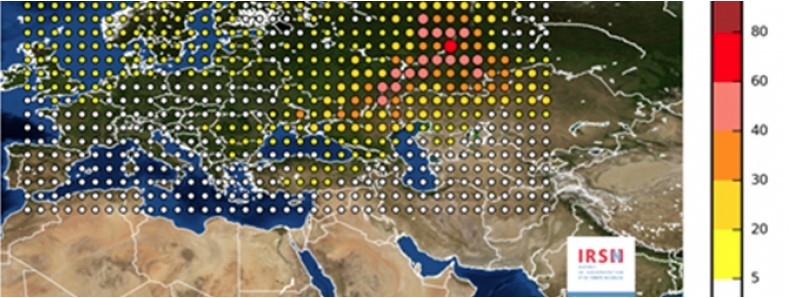Extremely high concentrations of radioactive Ru-106 in Urals confirmed and denied

Russia’s meteorological service Roshydromet confirmed Monday, November 20, 2017 that 'extremely high' concentrations of the radioactive isotope Ruthenium 106 (Ru-106) were detected in the southern Urals in late September.
Roshydromet reported Monday that it measured 'extremely high' concentrations of Ru-106 in the southern Urals between September 25 and October 1, 2017, but then contradicted itself and said that 'some environmental-protection organizations' increased attention to monitoring data during formation of their budgets for next year.
In one report, Roshydromet said that it measured a concentration of Ru-106 at nearly 986 times normal levels at the Argayash weather station in the Chelyabinsk region, referring to the amount as 'Extremely High Pollution' (EVZ). During the same period, the Novogorny meteorological station, in the same region in the southern Urals, levels were 440 times (also EVZ) those of the previous month, their report said.
However, in a separate statement posted Tuesday, November 21, the agency said that Ru-106 levels qualifying as 'Extremely High Pollution' had not been detected.
Roshydromet did not point to any specific source of the pollution, but the Argayash station is about 30 km (18.6 miles) from the Mayak nuclear facility. Mayak is today a reprocessing site for spent nuclear fuel but in 1957 it was the site of one of the worst nuclear disasters in history.
The reason why Ru-106 levels were hundreds of times higher in late September than in the previous monitoring period was that the isotope had been 'absent' from earlier findings, it said.
Roshydromedchief Maksim Yakovenko said that the levels of Ru-106 recorded in Russia posed no danger to human health as they are "hundreds of thousands of times lower than the allowed maximum."
Read more:
Spike in radioactive particles detected in Europe (October 11)
Detection of Ruthenium 106 in Europe: IRSN investigation results (November 10)
Featured image: Map showing the plausibility of the origin of the Ru-106 release during the last week of September 2017. Credit: IRSN

Commenting rules and guidelines
We value the thoughts and opinions of our readers and welcome healthy discussions on our website. In order to maintain a respectful and positive community, we ask that all commenters follow these rules.